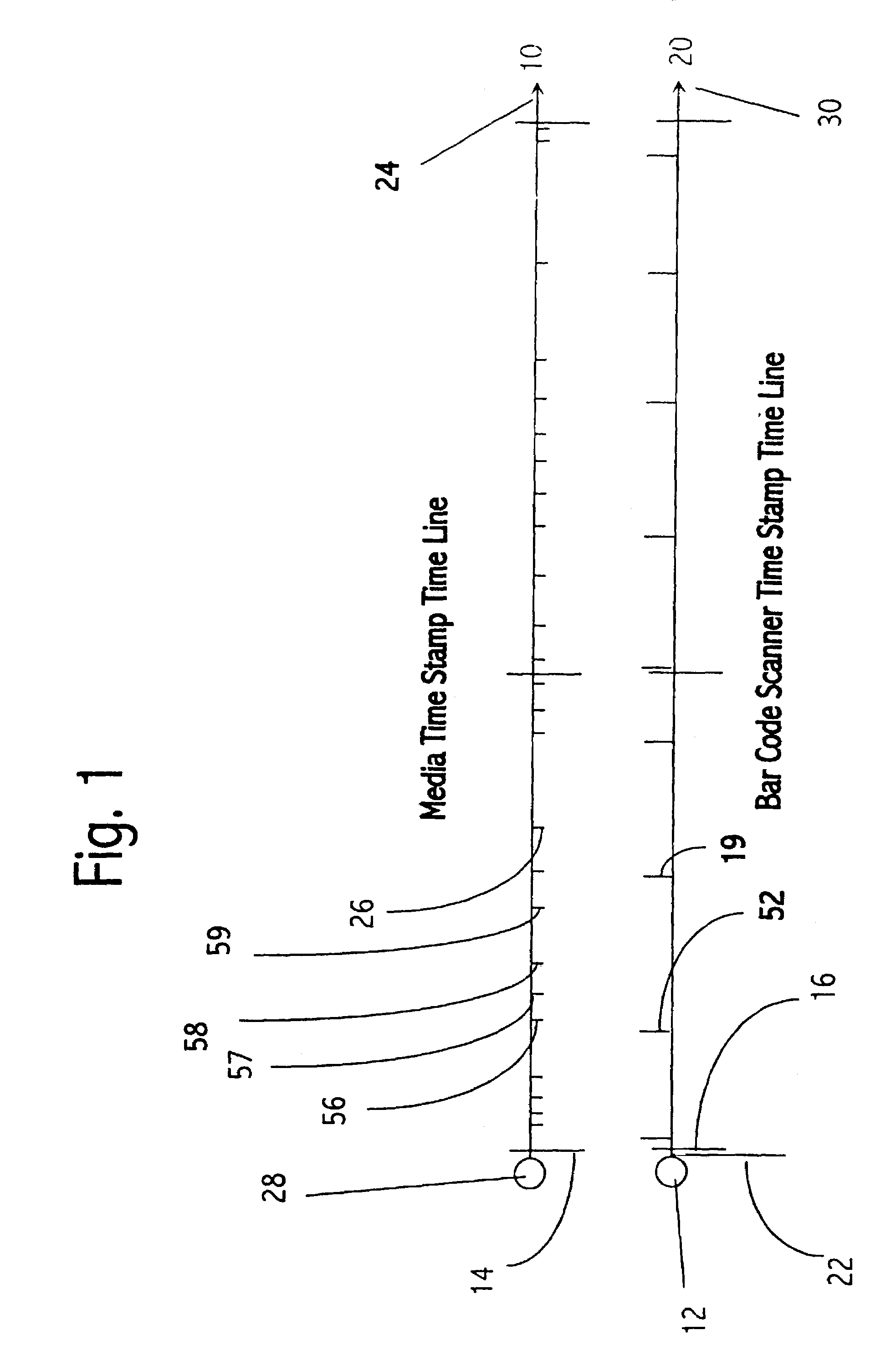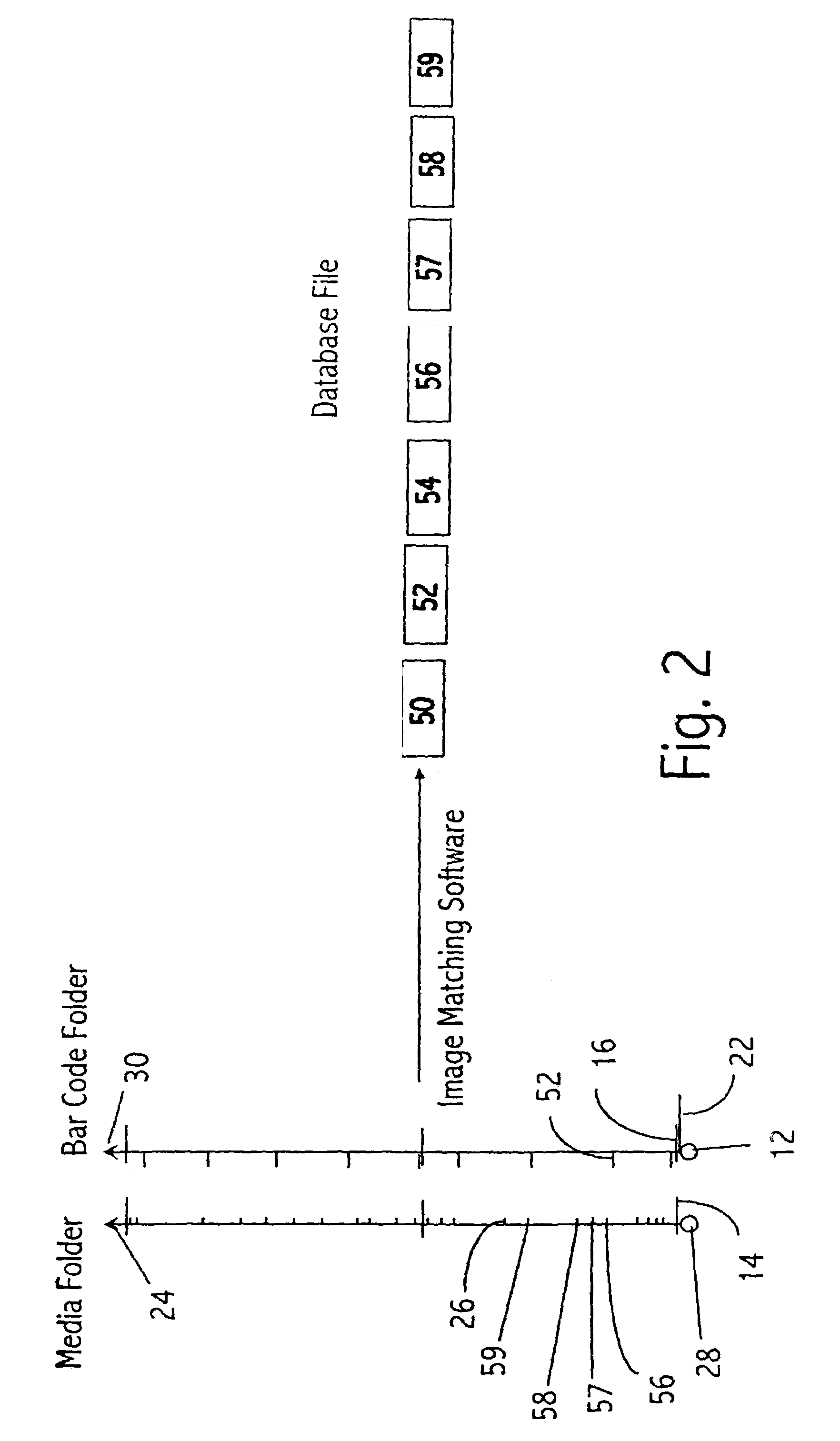Method of matching a digital camera image to a database using a timestamp device
a database and timestamp technology, applied in the field of tracking and storing a digital photographic image in a database, can solve the problems of photos tending to fade, battery power and failure, and high cost of laptop computers
- Summary
- Abstract
- Description
- Claims
- Application Information
AI Technical Summary
Benefits of technology
Problems solved by technology
Method used
Image
Examples
Embodiment Construction
[0024]A method of generating and matching digital photographic image data generated by a digital camera to a file loaded in a database, where the file has a unique identifier (UID) for a subject, said method comprising: a) providing a digital camera that records an image timestamp with every digital photographic image with a camera bar code, at least one digital memory medium with a media bar code, and a unique camera card with a card bar code for each subject; b) providing a portable bar code scanner that records the bar code and a scanner timestamp with each scan; c) scanning the camera bar code, therein recording the camera bar code and the camera timestamp; d) scanning the media bar code, therein recording the media bar code and a media timestamp; e) taking a time synchronizing picture; f) scanning the card bar code, therein recording the card bar code and a card timestamp; g) shooting the digital photographic image that is to be assigned to the subject; h) repeating step g unti...
PUM
 Login to View More
Login to View More Abstract
Description
Claims
Application Information
 Login to View More
Login to View More - R&D
- Intellectual Property
- Life Sciences
- Materials
- Tech Scout
- Unparalleled Data Quality
- Higher Quality Content
- 60% Fewer Hallucinations
Browse by: Latest US Patents, China's latest patents, Technical Efficacy Thesaurus, Application Domain, Technology Topic, Popular Technical Reports.
© 2025 PatSnap. All rights reserved.Legal|Privacy policy|Modern Slavery Act Transparency Statement|Sitemap|About US| Contact US: help@patsnap.com



